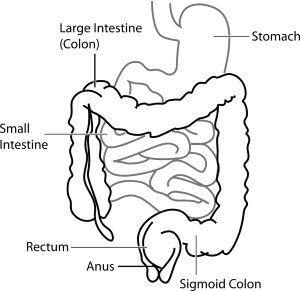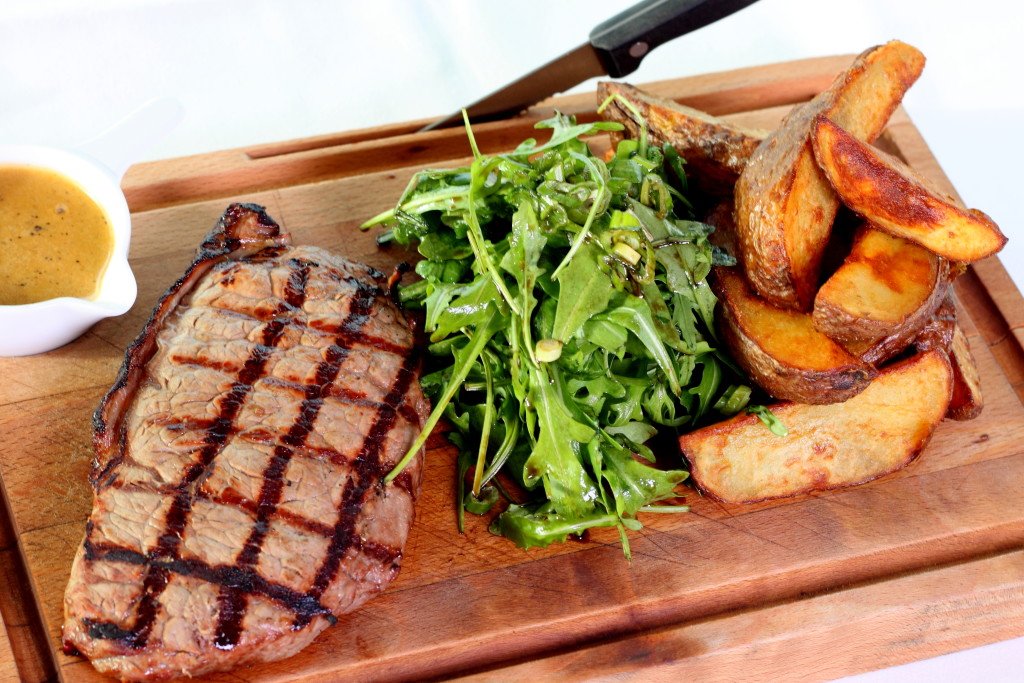Colon
In Part Two of this series we examined the structure of the small intestine and how nutrients are absorbed from the food slurry that moves through. The muscular process that keeps the slurry moving through the length of the small intestine is called the Migrating Motor Complex (MMC). This same process continues to move the slurry out of the small intestine and into the large intestine. Before we move on to what happens to the absorbed nutrients, we need to do a brief overview of the large intestine. The large intestine is also known as the colon. It is “large” in that it is larger in diameter than the small intestine. It is much shorter, though, as the colon is a little less than 5 feet in length. Under normal circumstances the process in the colon from entry to exit takes between fifteen and twenty hours.

Creative Commons Deed CC0
There are two primary functions of the colon that I want to mention.
- Microbiome digestion. Your gut is populated by organisms that are not actually part of you in the way that your organs and cells are part of you. These are actually separate organisms that are the “good bacteria” that help with certain nutrients that could not be broken down higher in the tube. The reality of this colony still surprises and amazes me. When you see advertising for probiotics, it is this colony of bacteria in your gut that they are claiming their product will help you build and nourish. The common terms used for this colony of good bacteria are gut microbiome or gut flora. Certain foods we eat can help nourish and build the microbiome. This includes cultured foods like yogurt, drinks like kombucha and kefir, and fermented foods like sauerkraut. This microbiome breaks down certain nutrients and allows for the production of vitamin K and other vitamins. So, how many of these good bugs live in your colon? Believe it or not, they number in the trillions with a “t.” It is important to note that while most of the good bacteria is found in the colon, there are also beneficial bacteria that live in the small intestine. Many health issues occur when the good bacteria in the gut do not thrive and when bad bacteria do thrive. Here is an outstanding article on bacteria and the small intestine. I hope to write a separate article later with more detail on the microbiome of the nutrition tube.
- Removal of liquids and formation of solid waste. While we did not mention it earlier, water has been absorbed already throughout the small intestine. Now as the process continues, the remaining water is absorbed into the body and solid waste is left in the colon to ultimately be eliminated from the body. The removed water ultimately ends up passing through the kidneys, into the bladder, and out as liquid waste.
There are obviously serious disorders and diseases of each component of the nutrition tube that require the expertise of medical professionals to diagnose and treat. The explanation I have provided in this series is my understanding of how a non-diseased gastrointestinal tract should work. Some of the disorders of the digestive system can be treated with a nutritional approach, but some require more aggressive intervention.
Conclusion
With that much too brief treatment of the colon, we have finished tracking the slurry through the complete nutrition tube from top to bottom. In the next article we will go back to the small intestine where we said that most of the nutrients from the slurry make it through the inner walls and are absorbed into the blood stream. Ponder the thought that these nutrients escape the nutrition tube and enter into your blood. Now they become part of you.
My next questions are:
- What happens to these nutrients when they enter the blood stream?
- How does the body make use of them, and how does that decision you made several hours earlier to eat 1,000 calories of doughnuts or broccoli impact the body’s chemistry and how those nutrients are used?
As with every question we have asked so far, these are actually very complicated questions. We will explore them in Part Four.


Where is part 4?
I am still working on Part Four. When I started the series I did not intend to go so deep. However, the more I learn the more I learn I don’t know. Hopefully the next article will be worth waiting for.
Thanks for reading and participating!